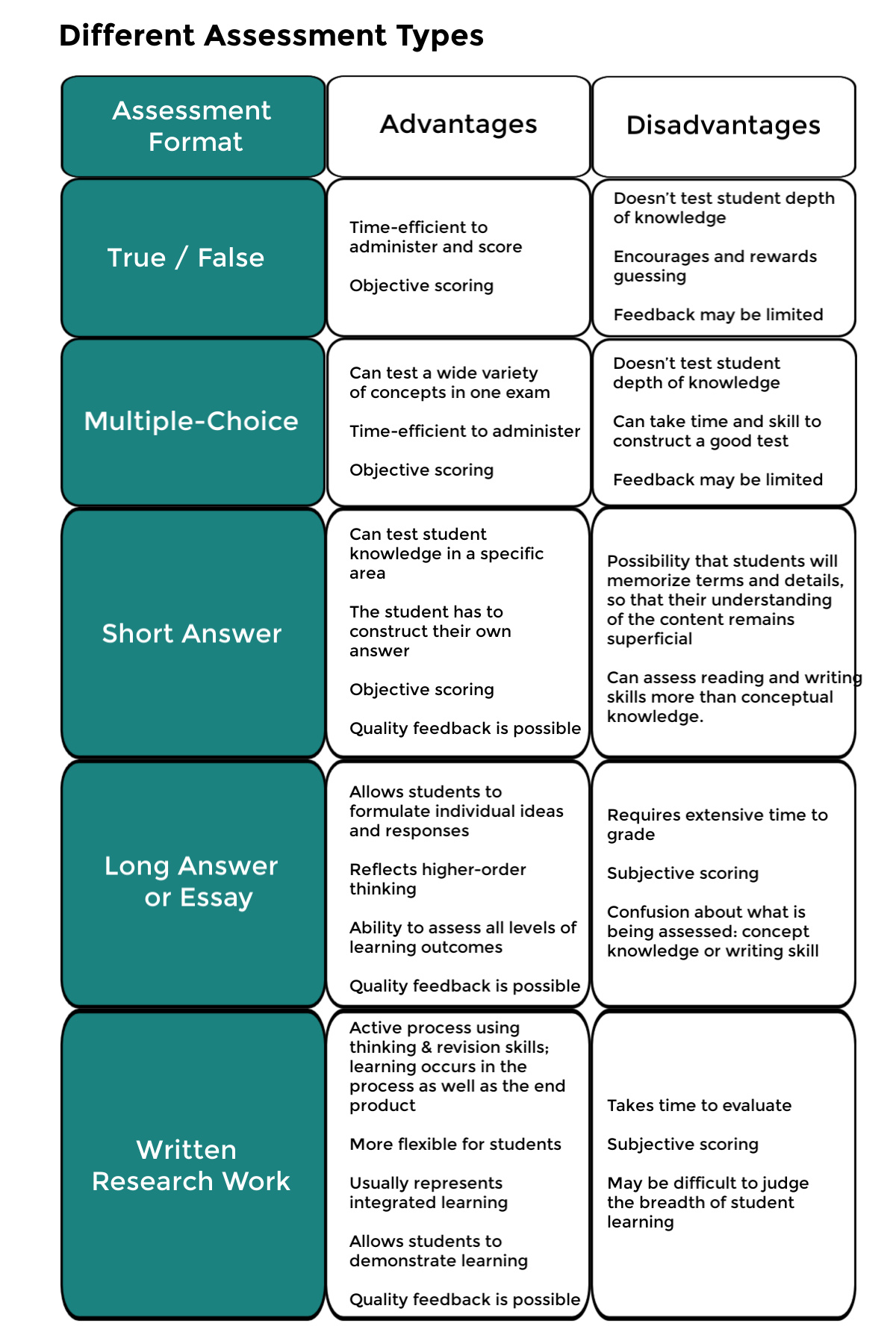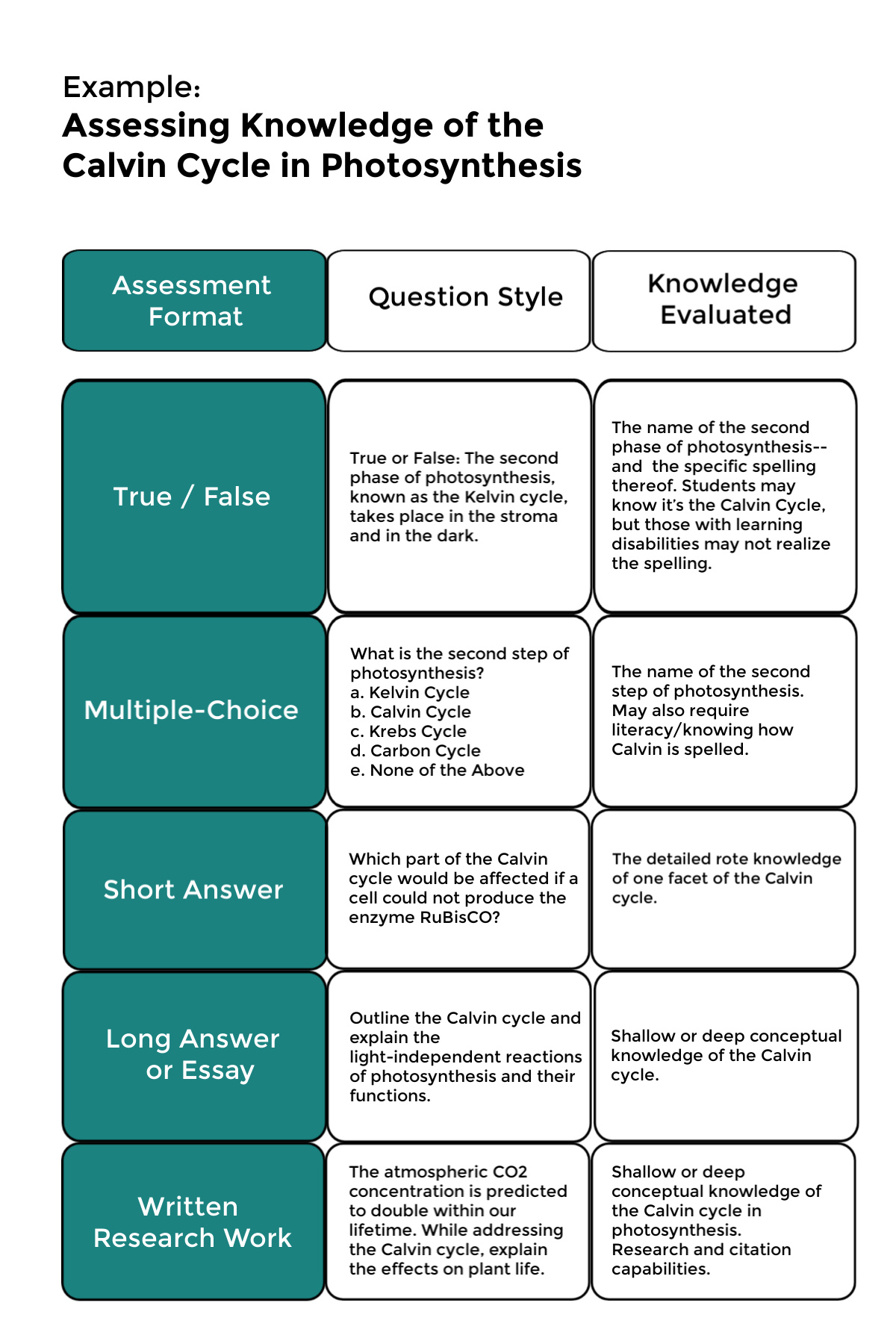In the realm of remote learning, assessment is especially crucial, because feedback can be the main thoroughfare through which teacher-student interaction occurs. It is when instructors can help guide students in learning but also when instructors gain insights into where students are in their understanding of concepts. Thus, student-teacher relationships are solidified through feedback exchange and in turn, positively influence student learning outcomes. Choosing a balance of assessment formats that enable feedback loops and learning insights is not a light task. So, it’s important to examine different forms of assessment to help teachers make thoughtful decisions when it comes to how we evaluate our students.
Assessment, regardless of the learning platform, is critical, because it:
- measures student learning;
- provides opportunity for feedback;
- and delivers insights into teaching and curriculum efficacy.
But which assessment types serve the purposes of student learning best, and in what ways? And what drawbacks, if any, might there be?
Let’s examine different assessment types, along with the advantages and disadvantages of each, as we begin exploring the possibilities. While there are myriad assessment formats, for the purposes of this post, we will be covering the following common assessment types:
- True / False
- Multiple-choice
- Short Answer
- Long Answer / Essay
- Written Research Reports
Each of these formats require a unique set of resources--such as printed sheets, blue book, computers, and scantron sheets--but most can be adapted for online learning environments.

The tension between time spent grading and the potential for student learning insights is palpable. Many of the assessments that provide richer data and feedback loops take more time to evaluate. For instance, instructors may shy away from long-answer or essay questions, because while they provide insight into all levels of learning and higher-order thinking, essay questions are time-consuming to grade and require personalized feedback.
Historically, educators weigh the time spent grading against the type of assessment delivered. Some assessment types (true/false questions and multiple-choice questions) are time-efficient, but have drawbacks in accurately evaluating student learning; they may limit what can be measured, encourage surface learning, and possibly measure students’ test-taking abilities more than whether or not students have a deep understanding of concepts.
A best-case scenario for assessment involves offering a diverse range of assessments within a course so as to be inclusive and realistic--accommodating both student learning needs and instructor grading efficiency. The strength of multiple-choice exams, for instance, lies in their ability to test a wide range of concepts in a shorter span of time. But an entire course of multiple-choice questions alone may not reveal the depth of student learning and may limit feedback that might further student learning.
When choosing assessment formats, it’s important to be aware and take into consideration the ways in which students learn and the variety of knowledge gleaned from different assessment activities. In order to best evaluate student learning, communicate feedback, and inform teaching, consider the following questions as you plan assessment:
- Do any planned assessments provide questions for students to deliver knowledge that elicits high impact feedback from the instructor? Consider short-answer and long-answer questions.
- Is the intended goal of assessment to evaluate students’ breadth of knowledge in a quick amount of time? Consider multiple-choice questions.
- Is there an opportunity to assess if students have a deep understanding of a concept? Consider long-answer questions.
- Do you have a balance of different assessment types within your curriculum? Consider offering a variety of formats to accommodate both your time and your student learning needs.
Let’s examine the ways one question (about the concept of photosynthesis) can be approached in different assessment formats, with a focus on the knowledge evaluated therein.

Each of the assessment types has something to offer--but the depth of insight varies.
Again, there are questions that can be answered in a more time-efficient manner, thereby offering the opportunity to assess students’ recall of knowledge. But it’s important to also investigate different formats so as to examine students’ depth of knowledge and provide feedback to students in order to advance their learning.
It’s important to offer a diverse arrangement of assessment types to students--to support learning, be inclusive for all learning types, and gain insights into teaching efficacy and student understanding. Diversifying assessment formats helps both students and educators--and in the ideal scenario, choices should be made with student learning outcomes first and foremost in mind.




